Acrylic Pointillism, Oil & Coldwax, Mixed Media Original & Custom Fine Art for Your Meditation, Office or Living Spaces - Shop Online or Email for More Information
T (760) 880-8725
Email: studio@craigallenlawver.art
Craig Allen Lawver
16-566 Keaau-Pahoa Rd #188-205 Keaau, Hawaii 96749
JOURNAL : Entry
Clone & Replicant : Field's of Color
Thoughts & Notes
On the subjects I paint
Journal Entry: Clone & Replicant : Fields of Color
Pointillist ‘Pop’ Color!
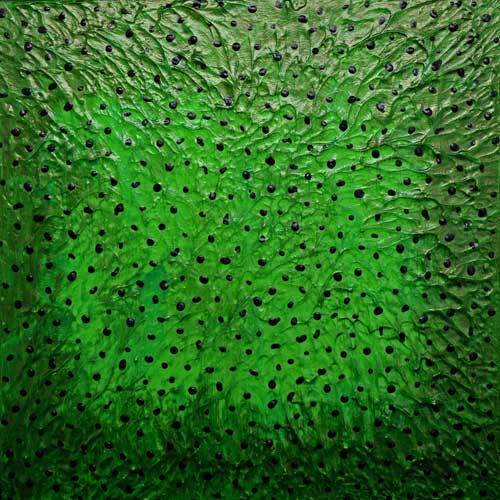
Clone, Replicant & Colorfield. Here is a place I find joyful expression. As a body of work or series, each clone is similar to others, but there is ‘genetic’ drift …
Clone: Green
Begin with Color …
A Move Towards Science
This Journal Entry: Clone & Replicant is where I begin with color. Color resonates – with me, you, and in the world around us. Although color is a great place to start an art project it’s bigger than the palette.
In theory and in practice, color is a constituent. It can be translated into many things. Its all an optic game we generally have no control over. Translation happens in artmaking. It’s essential.
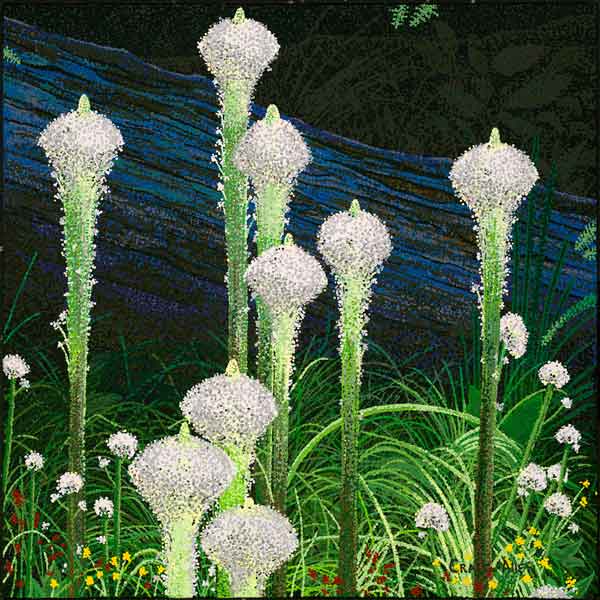
Blue-Log Beargrass
I feel like I simply recast the real with paint and pigment. Realistic depictions are not a goal. I am looking for a distillation of a subject. An impression of what I feel and see in front of me. There are definately physical forms and objects I love. And love is, or should be, the place an artist starts. Painting always veers off it seems, on a course increasingly steered more by the work, than the object.
Long before painting or dyeing, humans observed colors in nature. They first admired them, then distinguished them. Later, when they were still nomadic but had lived for some time in societies, they named, thought about, and classified them.
– Michel Pastoureau
I find depth and meaning in close observation of lifeforms. It’s like a scientific voyage of discovery. The technique of pointillism encourages one to look at everything in fine detail. Its true too, I want to understand the reasons behind the subjects I choose. I desire to understand the systems binding my life to this ecosystem.

My interests, reading and searching have shaped my path. But really, it’s me … just spending time with my work in dialogue. Call it quiet time, although it is usually anything but …
Orchid 1
Seeing in Color
We as Primates
Humans are optically primed to recognize objects in full color and in detail. In the ability to perceive color, we are not alone as a species. This capability is found in primates and monkeys. The ability to recognize objects in color and detail is found in many species.
Birds can see from five to seven colors. There are lifeforms that see only one or two. And there are species capable of seeing in the ultraviolet range of light and color. Spiders and bees are examples.

Cell: Green with Orange
Color and texture presented me an ideal place to start developing the small works in the series, ‘Clone and Replicant’. I love color of every hue. When working with glazes, texture is a valuable asset in creating interesting effects.
Biosphere & Ecosphere
A Culture of Color Field
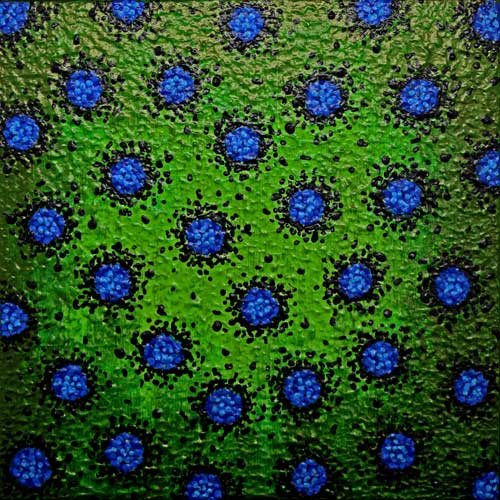
There are subjects I find more interesting if approached from the direction of abstraction.
Cell: Green with Blue
Viruses, mutations, clones and minute lifeforms fill canvases with explosive vibrancy. I imagine placing subjects under a microscope, dissecting, deconstructing, reconstructing and depicting larger than actual life-size.
My understanding of the Biosphere and Ecosphere’s complexity has grown. Appreciation has deepened. The methods I chose to explore the ecosystem have broadened.

Torch Ginger
Pointillism is an important pivot on which all my other creative endeavors swing. Lifeforms and art throw open the doors of perception. The right doorways can lead in many directions. When I work in coldwax, oils and mixed media I appreciate this fact all the more. Fine art or decorative, it’s all in the detail. At every turn color plays a role.
Nature’s ability to generate colors and color combinations you have never seen before is endless, and that is part of the thrill, part of the joy of the beauty of the earth.
– Michael J. McCarthy : The Moth Snowstorm: Nature and Joy
Nature is Vivid
Color in Perception

Red. Instantly, a color comes to mind. But the exact color of red that comes to your mind can be very different from mine. There are as many ways of perceiving the color red as there are individual sets of eyes. True red is highly subjective.
Clone: Red
What’s in a Name
A Little Bit of Everything & Some of Nothing …
The elements of art have long been held to be color, shape, texture and line. But an even more fundamental distinction is between color and luminance. Color, in addition to describing an objects surface properties, can convey emotion and symbolism, but luminance, what you see in a B&W photo alone defines shape, texture and line.
Charles A. Riley II
I could call this series, Color Field, Clone, Replicant. Even more so, if I consider how a color field is perceived by the brain. Conceptually, we all know what color is when we see it. But some of color’s inherent properties can be overlooked. Ordinarily, we may not think alot about color’s true nature … of how it happens.
The study of human perception and the study of color are fascinating. But, most of us are not taught to interpret our attractions or reactions to colors. I philosophically play with the concept of a clone or replicant, but add context through color field painting.
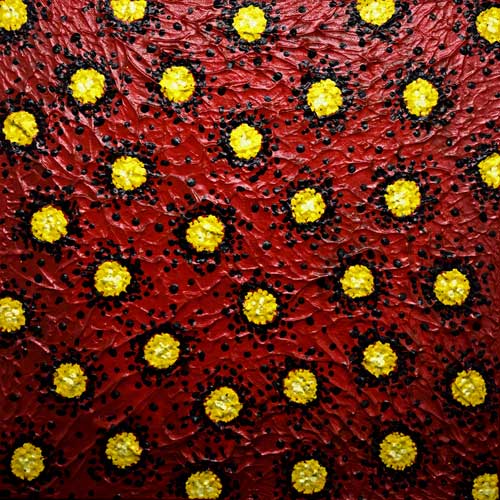
Cell: Red with Yellow
The way we perceive color is determined in part, by the rods and cones in our eyes. These basic biological structures differ between individuals. But, rods and cones are not the only factors at play. Cultural too, can play an important role. Culture, can condition us by repetitive experience, to think of red as having a particular quality.
Sketches and jumbled thinking can be rough but the artist is working towards an understanding that grows each day. Even the sunday painter is rethinking the landscape as the strokes of watercolor reorganize what is actually there on the horizon. Understanding is renewed as the composition is reworked with every edit. This knowledge developes in small bits or large leaps as the artistic process continues and potentially never ends. It is an ongoing phenomenon, as the artist grows more insightful and aware as their practice continues. There may never be an endpoint and that is acceptable because we can never fully understand any one thing …
G. James Daichendt
Journal Entry: Clone & Replicant
Color in Culture
Most of us have our favorite color or colors. We can be incredibly tenacious in our choices. Especially, when it comes to the interiors of our homes, the color of the clothes we wear, even the cars we drive. Agreement doesn’t drive us and our color choices can be completely different than those of our partners.
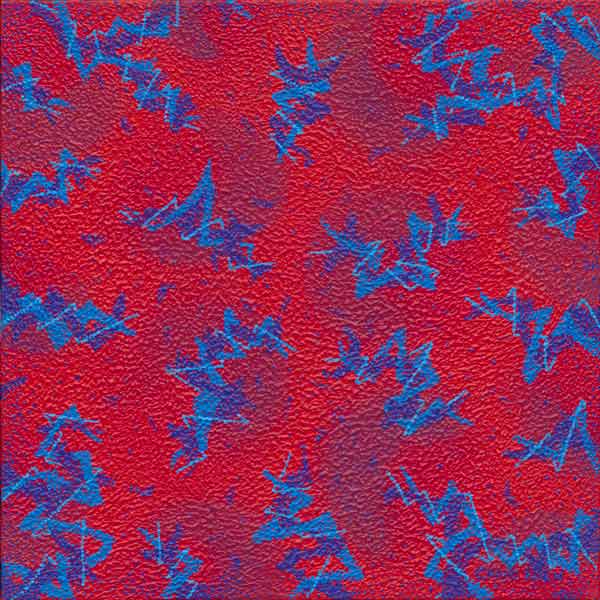
You think ‘tomato’ red. I think ‘fire engine’ red. In your mind you may see a red I consider too deep for true red. I may think a red somewhat purplish in nature as a truer example. Then add various cultural filters into the equation …
Blue Irregularities
“We know that virtually all of human behavior is transmitted by culture. We also know that biology has an important effect on the origin of culture and its transmission. The question remaining is how biology and culture interact, and in particular how they interact across societies to create commonalities of human nature.”
– E.O. Wilson
Cultural labels also help dictate the power of particular colors. Whether a color represents love, danger or both. Colors can, and often are, interpreted as being representative of nation, state and race.

Clone: Purple
The Wavelength
Color’s True Nature
When we look at color, what we actual see is an exceedingly small portion of the electromagnetic wavelength, spectrum. It is found somewhere in the neighborhood of 0.0007 millimeters in a condition where all the other wavelengths are then missing.
I am not attempting to answer every question that exists concerning the complexity of color. I am working towards context and framework …
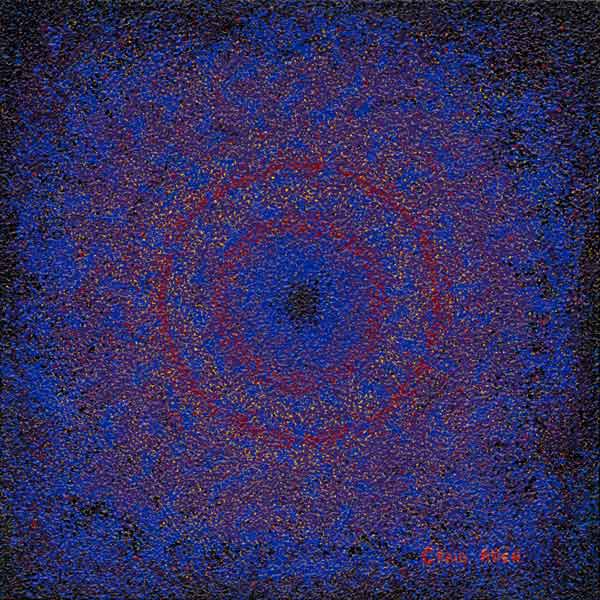
Language and art, are both ways for me to communicate ideas, thoughts and feelings. I think of an essay like a snippet of the color spectrum … only a little piece of the whole.
Brightness Lies Within
“The universe is pulsating with an energy that we call electromagnetic waves. The frequency range of electromagnetic waves is huge – from radio waves which can sometimes have more than 10 kilometers between them to the tiny cosmic waves, which move in wavelengths of about a billionth of a millimeter – with x-rays and ultraviolet and infrared and TV and gamma rays in between. But the average human eye can detect only a very small portion of this vast range – only in fact, the portion of wavelengths between 0.00038 and 0.00075 millimeters. It seems a small differential, but these are magical numbers for our eyes and minds. We know this section as visible light, and we can distinguish about ten million variations within it. When our eyes see the whole range of visible light together, they read it as white when some of the wavelengths are missing, they see it as color.”
– Victoria Finlay: Color: A Natural History of the Palette
Clone & Replicant
Putting it All Together
The basic construction of my colorfield paintings is simple. It leaves room for customization as the mood moves me. ‘Clones’ are layered colors with a textured surface used to grab the glaze. An overlying field of dots of pigment unifies them within a pointillist framework. I often think of the skins of animals when I work on these.
I begin with six basic hues on the color wheel. I use shades and tints of those colors and metallic paint to arrive at a desired result.
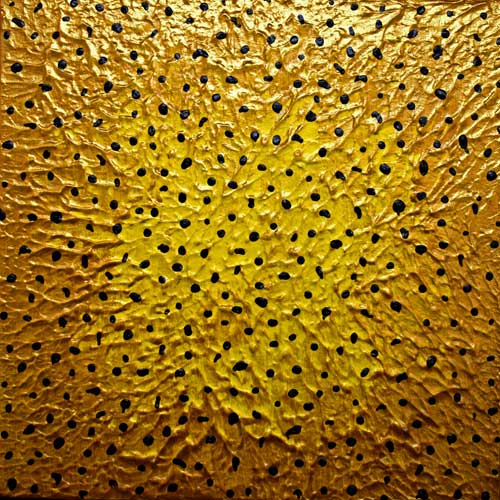
Clone: Yellow
These paintings are cultivated seeds in a creative conceptual process. This process hints at a larger vision. I use these in creating narrative installations. These small works serve as unifying elements and a visual glue. But, they maintain an aesthetic quality uniquely their own.

Perceived beauty is driven as much by our individual attraction to particular colors as it is towards the shape and form of an object. It is a result of our direct experiences with a color or group of colors.
Sulphur Beetle
As a body, these works can be organized endlessly in any number. It is possible to create a large or small multi-canvas color field that can fit organically within any size, or type of space. Mutability is important.
Science & Art
Exploring The Ecosphere
I am intrigued by how science relates to my work as an artist. How my work fits within the framework of nature, perception and consciousness.
Art is a passion. I also love Science Fiction and the infinite possibilities it presents. However, I am not by any means a scientist. But I do love the history of science and its many incredible discoveries.

Clone: Blue
Each clone or replicant contains a tiny bit of all my passions. Within their basic composition are fragments of a life. Each subsequent painting I make is in ways, a template in the making of the next. Another step along a path. Clone and replicant in name, if not in truth.
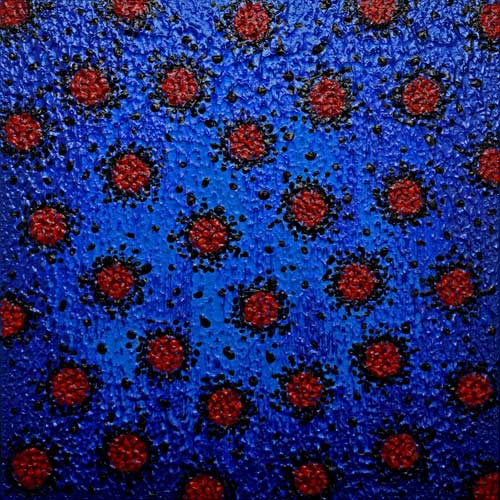
I am fascinated by biology and the properties of DNA and cells as fundamental building blocks in the formation of life. I am interested in the global ecological systems that integrate all living beings, and their relationships.
Cell: Blue with Red
“(John) Gurdon’s experiments (1960’s) incited the imagination of biologists – not least because it seemed like science fiction fantasy brought to life. In one experiment, he produced eighteen clones from the intestinal cells of a single frog. Placed in eighteen identical chambers, they were like eighteen doppelgängers, inhabiting eighteen parallel universes…. In time, variations on Gurdon’s method would lead, famously, to the cloning of Dolly, the sheep, the only higher organism reproduced without reproductions (the biologist John Maynard would later remark that the only other ‘observed case of a mammal reproduced without sex wasn’t entirely convincing.’ He was referring to Jesus Christ. Gurdon was awarded the Nobel Prize for his discovery of Nuclear Transfer.”
– Siddhartha Mukherjee: The Gene: An Intimate History
Nature
The Art of Genetic Drift
My art is hand-made. This results in subtle differences emerging in the face of homogeneity. No two are works are ever identical. It doesn’t matter how many I make at any one time. I am not aiming for faithful reproductions. This is an exploration of mass reproduction without offering you one.
Through mass production, communication and mobility, a vast catalogue of replicable images is now available to all of us. I often wonder if it is possible to stand out in the deluge.
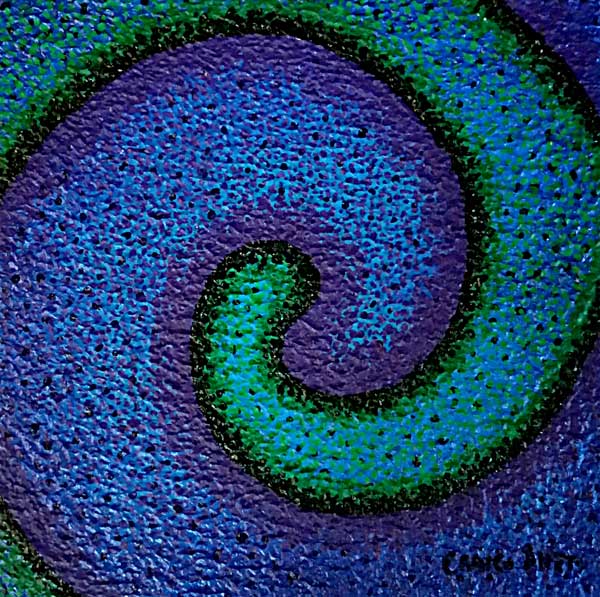
Waveform 4
Mass production isn’t the muse that calls me in creating art. Many things in my life have changed over the years. I expect my work to keep changing too. I ally the process of making ‘clones‘ to the concept of genetic drift. I start at a particular point in time and space, but life and art move in diections of their own accord.

Oxford languages defines genetic drift as a variation in the relative frequency of different genotypes in a small population, owing to the chance disappearance of particular genes as individuals die or do not reproduce.
Tinker Butterflyfish
By applying this concept to my work, I dictate ensuing changes as adaptations occur. These changes happen in many ways. They manifest in my handling of materials, in method and technique. They occur as a result of mind states and my surrounding environment.
A Dynamic Field …
Loaded With Inputs
We are bombarded and immersed in a dynamic cultural field. It is a field of limitless sensory inputs. I frequently experience an urgency to try, see, absorb and create everything. These works sit comfortably within and beyond these feelings.
Through an ever-replicating number, the presence and effect of clone, replicant, and color field are amplified. As the one becomes the many, and the many become multitude, an entirely different organism ascends.
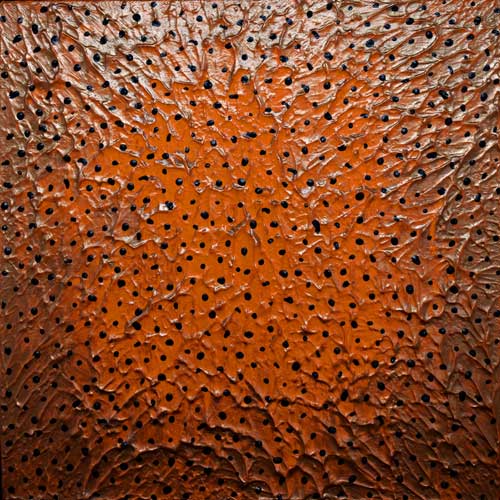
Clone: Orange
Painters have paint and canvas, sculptors whatever stuff they use, musicians have instruments and sound – all immediate and tangible. Writers and speakers have nothing but words, whose tangible power comes not from what they are but but from what they are not. That is, the power of words lies not in the letters and sounds but in what these arbitrary and abstract signs refer to and point towards.
Norman Fisher
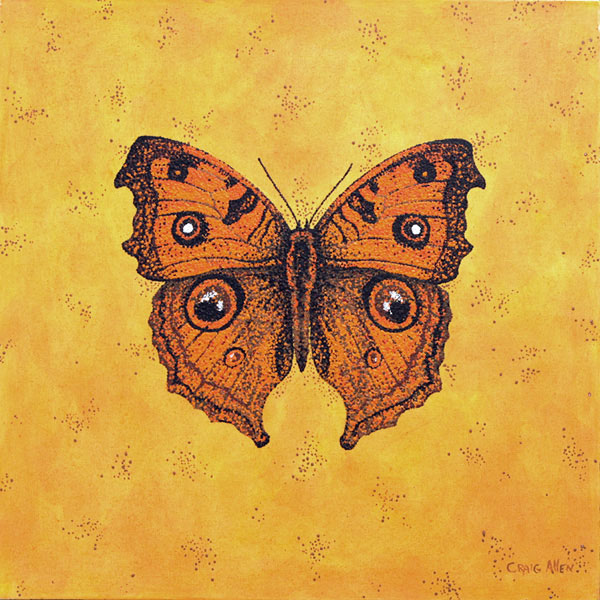
At times I feel like a saturated sponge. At other times a butterfly struggling its way towards a new life. I am not a machine although I have patterns and dictating algorithms. My only vision of the future is the one I imagine.
Peacock Pansy Butterfly
We are caught up in a swirling cultural vortex. We are intentionally enflamed by advertorial manipulation. We are psychologically conditioned to be on a constant search for the new and are increasingly dissatisfied with what we have. We exist in a capitalist consumer society taken to a logical conclusion.
Replicant …
But Not Reproduction
The replicative quality of these works is the result of my desire to establish a philosophical, artistic anchorpoint. Within a set parameter, there is a dialogue with consumer culture. There are questions – one involving human versus machine-made artifacts. These clones are not painted on a human assembly line. My work is not created in sweatshops or by hired hands.
The clone is a launching place in an ongoing exploration and a reproductive curve that works its way toward the cell.

Cell: Orange with Blue
A frequency of error could be programmed if I chose to use AI. But mistakes that happen through natural human error lead to better understandings. I think of painting as a philosophical undertaking. Effort, philosophy and faith are woven throughout my journal and image galleries.
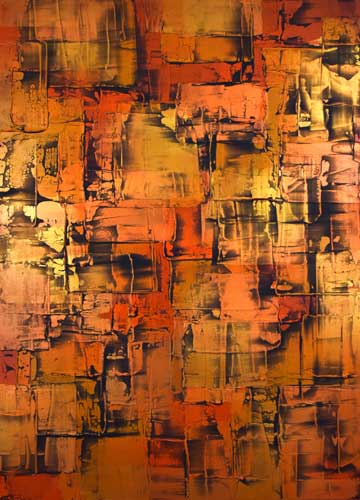
This essay is a tool for me to organize my world. Nothing here is the enitirety of truth or of fiction. There is perhaps, a little of both – science mixed with story. I enjoy color fields and I believe color, like people, should be cherished and enjoyed. Each is a part of a greater community.
Modern Metal Orange #3
We tend to see practice in terms of time – as if we were climbing a ladder step-by-step. This is not the Buddhist idea of practice. When you climb a ladder, you do so with your eye on the future. With this approach to practice, there is no peace, no spiritual security – only a hope for the future … refined action is not like this. From the start, it lies in peace and harmony.
Katagiri Roshi
A Summary of Sorts …
The Bigger Picture
Clones and replicants are a base. Their function lies simply in their color. Abstractions have taken shape of their surface. By building impressions or images on a replicant body I arrive at a type of congruity. Context, color and form find their natural harmonies.
Following this down a rabbit hole continues to fascinate and inspire me, pushing me in new directions and in my use of unexplored materials. In the making of art, I find nourishment for the soul.
The seeds sowed on these pages sprout and grow in my work and thoughts. In simply being, I find my place here on this Earth. Wavelengths and systems, art and thinking, living and breathing and being mindful.
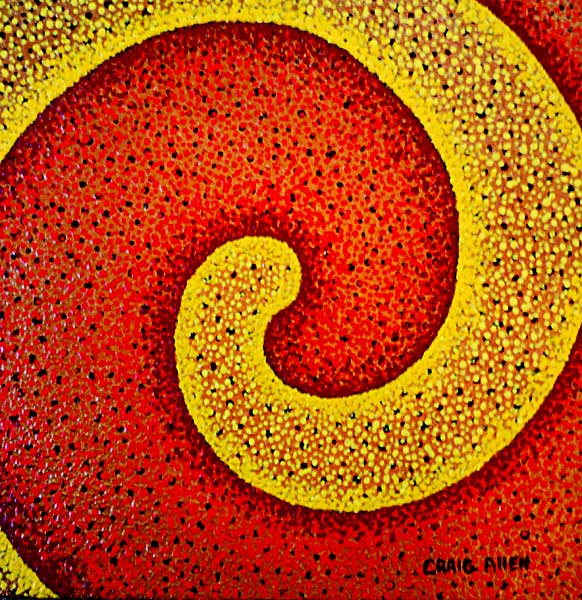
Waveform 14
As I’ve grown older, life seems in mnay ways to have become much more complex. I find this to be true in both the life I live, and and in making art. Growth is evident in my life and reveals itself in my images. Art as a process is continuous. As I build on established foundations, I continue to move swiftly down the trail of life. When I look behind me, what I see is a breadcrumb trail.
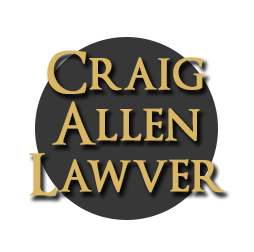
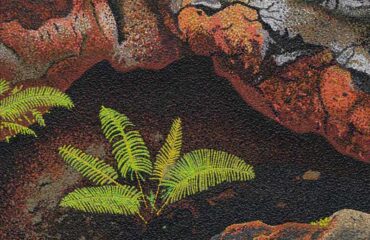

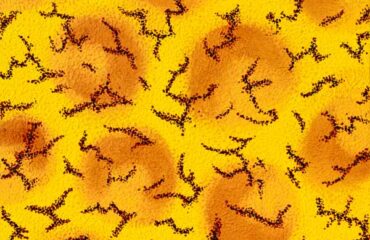
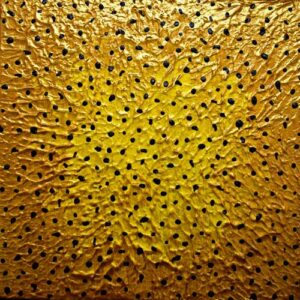



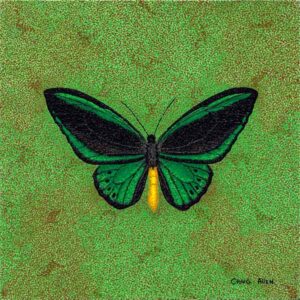
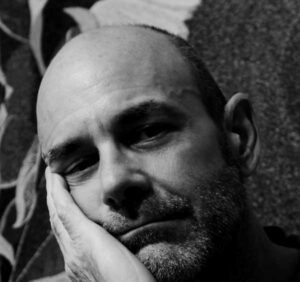
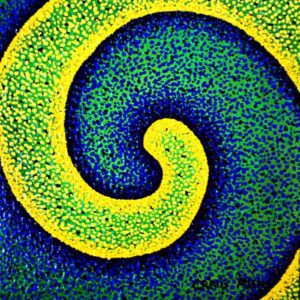


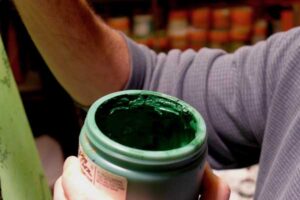
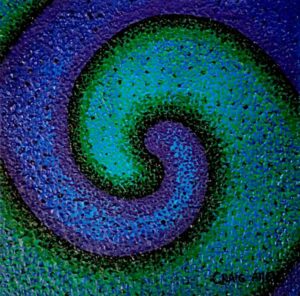
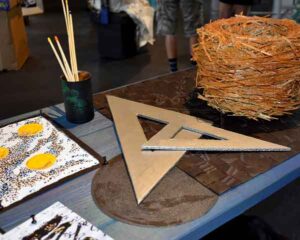
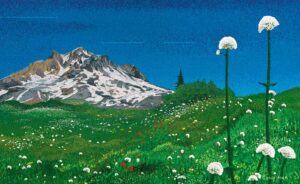
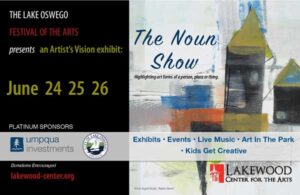

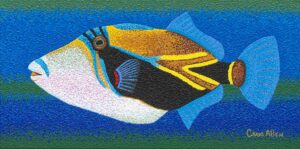

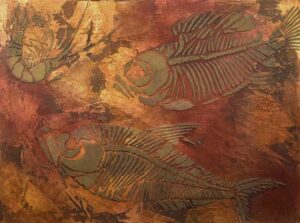

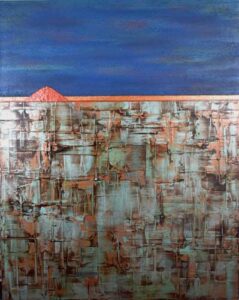
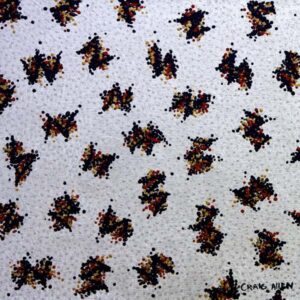

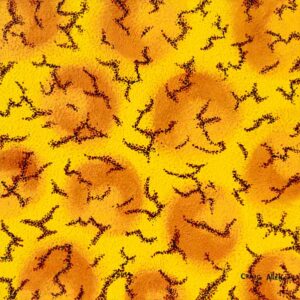
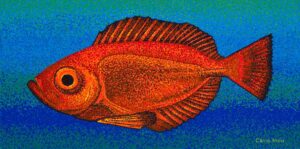

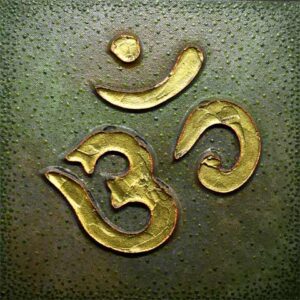
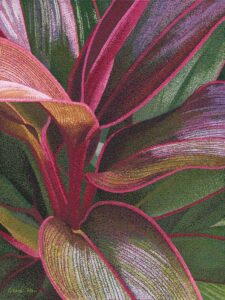

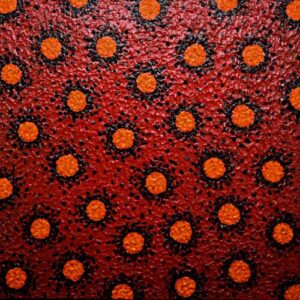
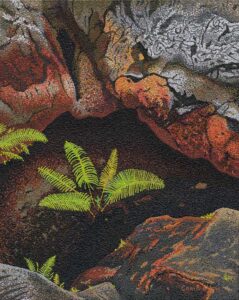
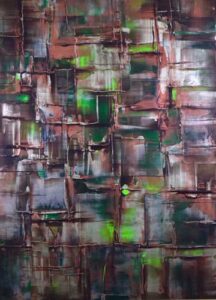
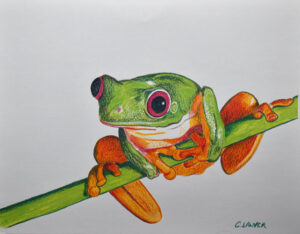

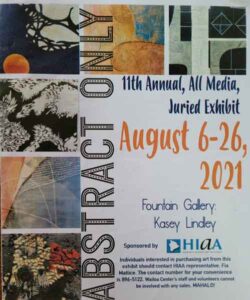
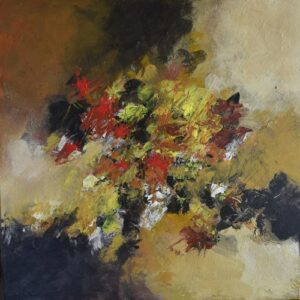
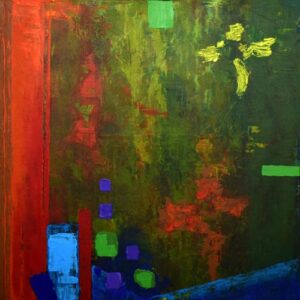


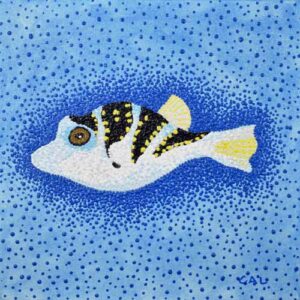
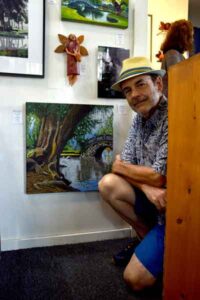
Facebook: Craig Allen Lawver Art